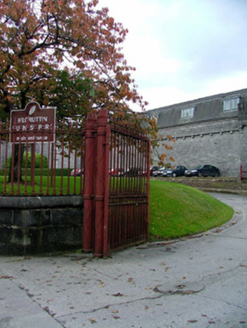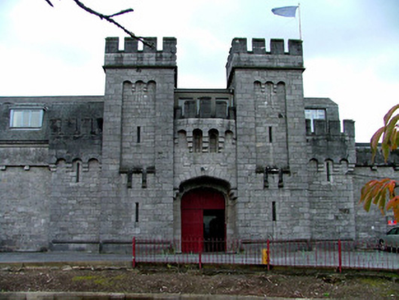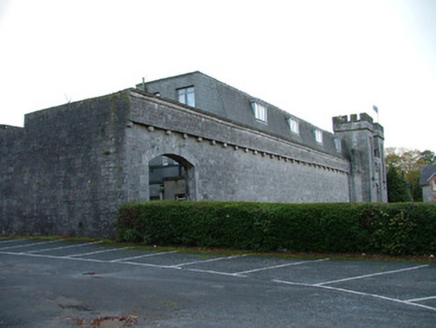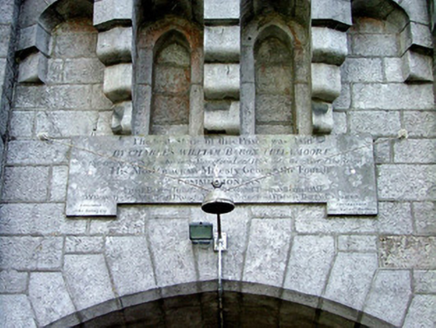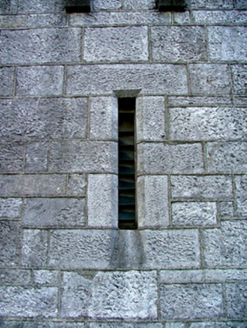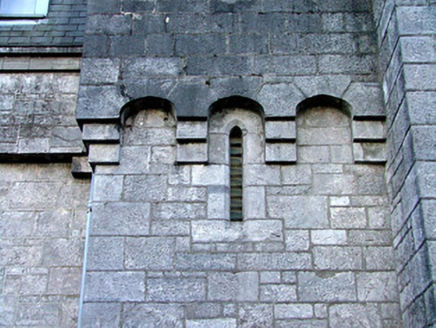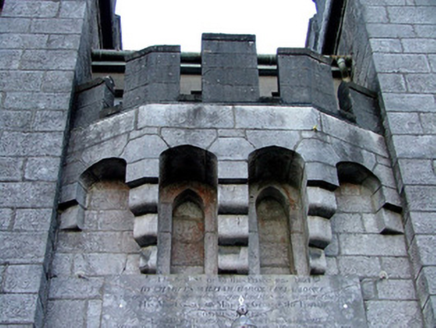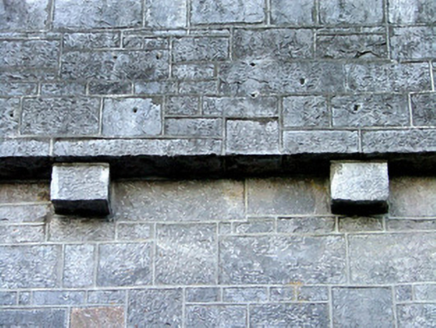Survey Data
Reg No
14807046
Rating
Regional
Categories of Special Interest
Architectural, Historical
Previous Name
Tullamore Gaol
Original Use
Prison/jail
Date
1820 - 1830
Coordinates
233541, 224486
Date Recorded
21/10/2004
Date Updated
--/--/--
Description
Former gaol wall with three-storey keep-like entrance, built between 1826 and 1830, with segmental carriage arch opening to north-east. Modern mansard style roof above front elevation with dormer windows. Southern-light roof to rear mid twentieth-century factory. Dressed snecked limestone wall with tooled corbels supporting overhanging parapet. Entrance keep to south-west with towers flanking pointed-arched door opening with recessed double timber panelled doors. Arch above connecting towers with plaque. Plaque reads: 'The first stone of this prison was laid by Charles William Baron Tullamore on the 13th day of September in the year of our Lord 1826 under the 7th year of the reign of his most gracious majesty George the fourth. Commissioners Lord Baron Tullamore M. P., Colonel Thomas Bernard M. P., William Trench, John Head Drought, Valentine Bennett and Francis Berry Esquires. Engineer John Killay. Contractors Henry Mullins and McMahon, John Rafter Sculp.' Decorative machioclations, crenellations and loops to keep. Modern factory units to rear of site. Set back from road with front site bounded by cast-iron railings on battered ashlar limestone wall with pulvinated coping. Site accessed through cast-iron gate piers with decorative axe finial.
Appraisal
Located beside the courthouse, Tullamore Gaol formerly played a pivotal role within the town and replaced the prison at Daingean (Philipstown). Completed in 1830 the gaol received prisoners for over a hundred years until the site was cleared in 1937-8 to provide a site for a spinning mill for Salts Ltd. and in time Tullamore Yarns Ltd. These factories served as the economic backbone of the town providing employment for a large workforce. Today the site is still in use and has moved with the times to become a business park. The architect of the gaol is uncertain, but it follows the same plan as that in Limerick, designed by James Pain. Though the rear of the gaol was demolished, the front wall was retained as a reminder of the finely constructed structure. Executed to a foreboding and defensive design, the structure is of both historic and architectural value to Tullamore town.
